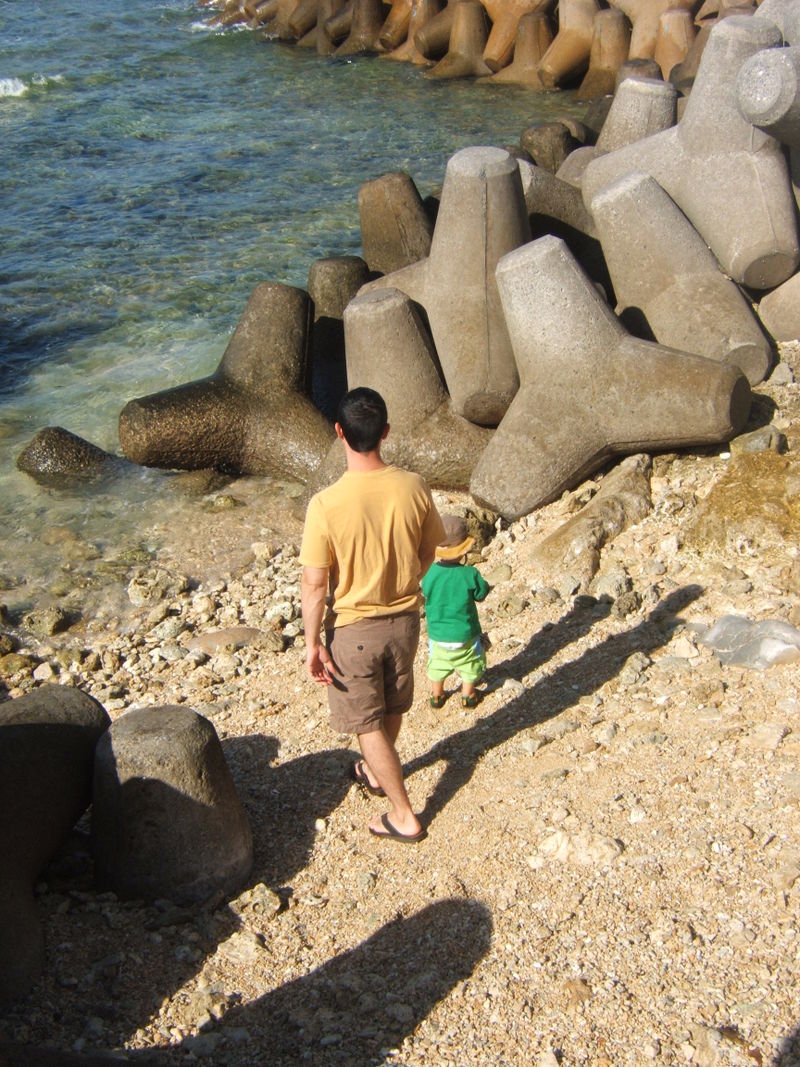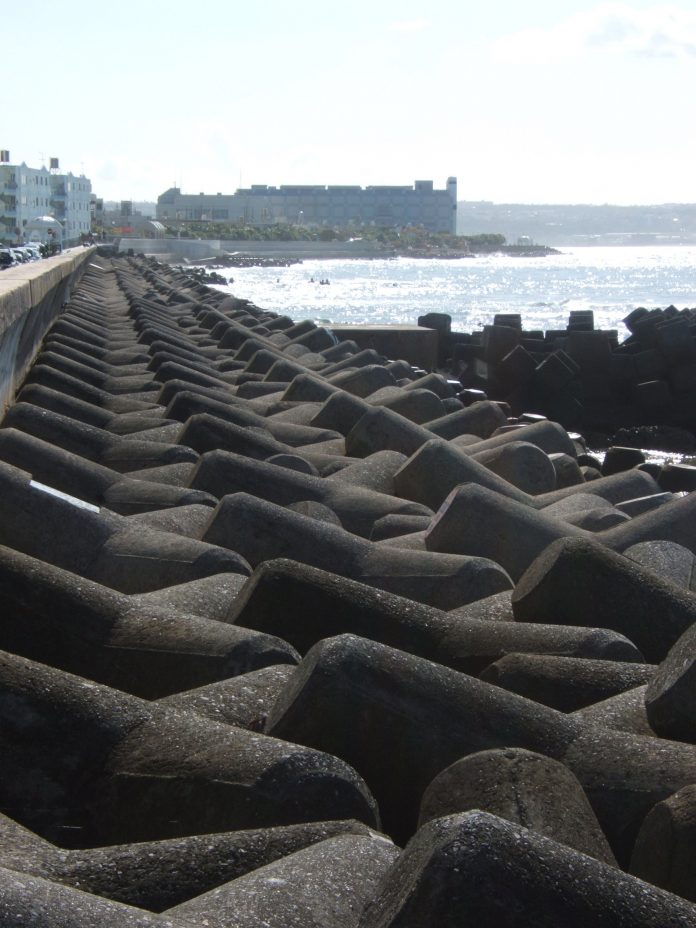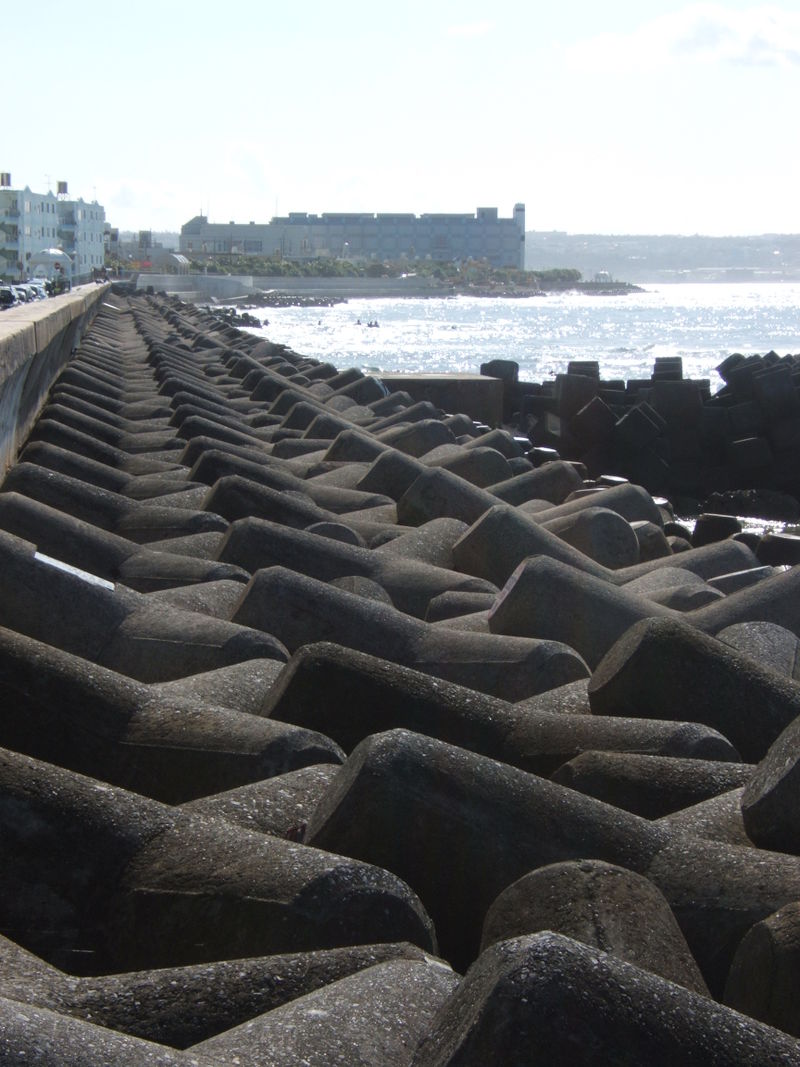CONTRIBUTED BY STACI HAWLEY

I say Sea-jack. The Japanese say Tetrapods. Either way- they are an interesting architectural design that serve quite an important purpose. As my son and I peruse the seawall in Chatan, the Tetrapods provide an interesting hide- and -seek for all things crustacean. If you look long enough, you will be amazed at the ability of nature to cling at something without crags, holes or anything else to grip. So I thought I’d give you some tidbits about these concrete monstrosities that line our seawalls and keep us safe.
Did you know:
* Tetrapod means- The word “Tetrapod” (taken from Greek) means “four-legged” — hence in English it means “four-legged animal”.
* Tetrapods are designed to remain strong despite heave waves and currents (especially because they are arranged in lines or clusters). Good for those of use living along the seawall!
* Japan uses the highest number of Tetrapods.
* Tetrapods actually change the ocean currents.
* In Japanese the Kanji characters translate into “wave breaking”
* Each Tetrapod weighs about 80 tons.
* It would be cool to take one home to the states as a lawn ornament. Not sure it would make the weight allowance, though.
* Tetrapods were created in France in 1950.
* If you have a keen interest in Tetrapods that actually breathe, check here : https://www.ucmp.berkeley.edu/vertebrates/tetrapods/tetraintro.html
* If you want to learn more about Tetrapods and discover where I researched, check here:
https://www.concretebasics.org/clctetrapods.html
* So dear readers, were you fascinated by your first sight of a Tetrapod? Did you find them interesting- or an awkward invasion of the breathtaking Okinawan coastline?




I used to install these in Florida along some of the jettys. So I had seen them several years before I ever saw them in Okinawa. Nice post though.
can you give me the standart dimension of tetraport??…
thanks
regards,
Lambutan Sinaga
Thanks Staci I love knowing all of this info. I call them sea-jacks too cause that is what they look like!
I like that the grafitti from the seawall is carrying over onto these things! Alot of the *jacks* have smiliy faces painted on the ends. 🙂
This is interesting. We haven’t been over to the seawall yet, so now when we get there I’ll know exactly what to say when my daughter asks what they are. Perfect timing! 🙂
LOVE this info! They have a bunch of “Tetrapot” paraphernalia at GELOBELO. It’s so cool.
But I was a bit dubious that each one of those suckers at the sea wall being 16,000 lbs. I thought not. The site reads:
“One Japanese company, Osaka- and Tokyo-based Fudo Tetra Corporation, has a line of 18 different blocks that range in size from half a ton (90-cm high and 1 meter in width) to 80 tons (5 meters high and 6 meters wide).”
Those guys outside aren’t 5 meters high, I’d say maybe 2, wouldn’t you? still HEAVY suckers, right? Thanks, new mom Staci!
What a cool post. When my family and I drove up to the aquarium we wondered what those were. Now I can proudly and accurately answer all my daughters questions.
In my case, I knew what they were, but I didn’t know all of the information behind them and I thank you for the trivia! 🙂
When we got to Okinawa, they were a welcoming sight for me, since I grew up along the Mexican coast and we have those in our breakers.
One odd thing about ours, is that the last time our town was in a hurricane’s path, one of the tetrapods was lifted by the hurricane’s winds and place on top of the breakers. It is now a tourist attraction haha.